Windjammers, like Moshulu, would spend several years abroad before returning to their homeport for an overhaul on slip. Crew maintained the ships whenever the chance arose, usually when in port or in calm weather when fewer hands were needed to sail. The sailors were kept busy for days on end, chipping and painting the vast iron hulls, taring the rigging to protect it from weather, scrubbing the decks and caulking hatches to seal them for the voyage.

Two crew members on Parma sitting aft on the starboard side of the poop, renewing the caulking or a small area of decking.
Eric Newby gained first-hand experience of the difficulties chipping rust and painting the outside of the Windjammer Moshulu’s hull with red lead before leaving port. Grabbing his hammer and paint pot Newby inspected the platform he was to work from, a plank suspended by two ropes belayed (tied) on deck. He noted, “I do not think it was by chance that the platform I inherited was in the most difficult position right over the bows, about two feet above the water.”
A system of ropes used to lower and shift the platform sideways got the better of the inexperienced Newby, who released a clove hitch that was holding his platform in place and he swung sideways into his neighbour, Sedelquist. Newby dropped his hammer into the dirty water of Belfast harbour and spilt red paint over Seldequist’s overalls. The infuriated Seldequist sent for the mate, who called down to Newby, “Jesus, because you are English you think you can lose my hammers. I’ll take it off your pay”.
Later that day, dinner was called and the agile, experienced Sedelquist left Newby behind, where he struggled with the ropes until he eventually swung a foot into a hawsepipe and clambered over the rail, well after dinner was over.




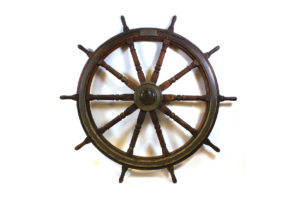
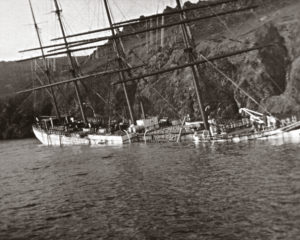
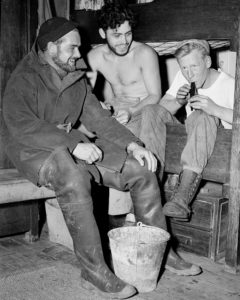
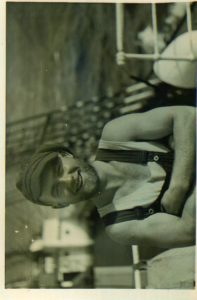
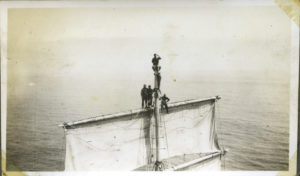
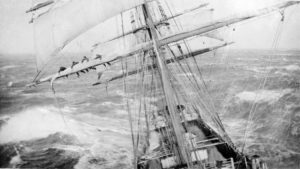
 Visit
Visit